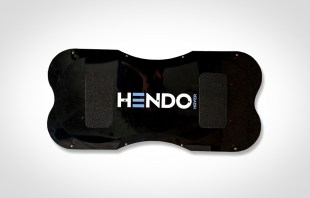Well, so it happened… the “future” as predicted by the venerable film BACK TO THE FUTURE II has not quite arrived despite the date depicted in the film having come and gone. (Marty, Doc, and Jennifer popped into the future on October 15th, 2015, FYI. Instead of time travelers arriving from the 80s on 10/15/15, instead we announced the halt of troop withdrawal from Afghanistan that day, which does in fact have some correlation to the 80s, so hey!)
Related: Should your self-driving car kill you to save a school bus full of kids?
We have no self-drying jackets, no flying cars, and of course… no hover boards. But while those matters sartorial and automotive may be still far in the offing, on that latter front, technology has made some rather impressive strides. None of the three devices discussed today are going to zip you around like Marty McFly on a wild ride, but they’re all pretty damn cool, and at least they prove that some brilliant designers and engineers out there are doing their damnedest. So, maybe we’ll check back in 2045? For now, here is the finest stand-on transportation 2015’s technology has to offer:
 This unique self-balancing electric unicycle lets you stand still while zipping across town at the pace of a fast jog. The AirWheel Q5 has a top speed of a little over 11 miles an hour, and a range of about 12 to 14 miles depending on the terrain. And as the AirWheel weighs just 25 pounds but can support riders of up to 260 pounds, it’s a viable method of transportation around a city or to/from a train or subway: unfold the pedals, ride your electric unicycle to the station, pop it into a backpack or duffel, and then be on your way. At about $450 before taxes and shipping, the AirWheel isn’t exactly cheap, but it’s both enjoyable and useful enough to be worth consideration.
This unique self-balancing electric unicycle lets you stand still while zipping across town at the pace of a fast jog. The AirWheel Q5 has a top speed of a little over 11 miles an hour, and a range of about 12 to 14 miles depending on the terrain. And as the AirWheel weighs just 25 pounds but can support riders of up to 260 pounds, it’s a viable method of transportation around a city or to/from a train or subway: unfold the pedals, ride your electric unicycle to the station, pop it into a backpack or duffel, and then be on your way. At about $450 before taxes and shipping, the AirWheel isn’t exactly cheap, but it’s both enjoyable and useful enough to be worth consideration.
 So guess what? There is a real, honest-to-goodness hover board that already exists! The only catch? You need a massive flat metal floor upon which to operate it. The Hendo Hoverboard works by using the repellent power of magnetism: its dual disc “hover engines” create a powerful magnetic field that lifts the board off the metal flooring beneath it, creating a true hover effect and thrilling the rider who does not immediately fall down. While not a practical toy for most of us at present, given the need for that huge metal surface, the Hendo company does have some promising ideas for more industrial applications. Can’t you picture a fleet of robots hovering around a factory floor, sorting your order of books/garden hoses/textiles/beef jerky with the greatest of ease? We’re going to guess Jeff Bezos can…
So guess what? There is a real, honest-to-goodness hover board that already exists! The only catch? You need a massive flat metal floor upon which to operate it. The Hendo Hoverboard works by using the repellent power of magnetism: its dual disc “hover engines” create a powerful magnetic field that lifts the board off the metal flooring beneath it, creating a true hover effect and thrilling the rider who does not immediately fall down. While not a practical toy for most of us at present, given the need for that huge metal surface, the Hendo company does have some promising ideas for more industrial applications. Can’t you picture a fleet of robots hovering around a factory floor, sorting your order of books/garden hoses/textiles/beef jerky with the greatest of ease? We’re going to guess Jeff Bezos can…
 OK, right out of the gate we have to take some issue here: this company calls itself HoverBoost and calls their flagship product a HoverBoard despite the fact that there is nothing at all hovering here. In fact the HoverBoost HoverBoard sits squarely on the ground atop its two parallel wheels. That said, it’s remarkably easy to use with simple, natural body movements, and it has a range of as much as 18 miles on a full charge.If you want to get about as close to a Marty McFly-style hoverboard as possible without breaking the bank and installing a massive metal floor in your home, this, for now, is the way to do it. Again, how about it, 2045?
OK, right out of the gate we have to take some issue here: this company calls itself HoverBoost and calls their flagship product a HoverBoard despite the fact that there is nothing at all hovering here. In fact the HoverBoost HoverBoard sits squarely on the ground atop its two parallel wheels. That said, it’s remarkably easy to use with simple, natural body movements, and it has a range of as much as 18 miles on a full charge.If you want to get about as close to a Marty McFly-style hoverboard as possible without breaking the bank and installing a massive metal floor in your home, this, for now, is the way to do it. Again, how about it, 2045?






